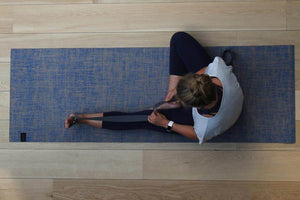Jumping rope exercises are an excellent choice for all people regardless of their level of athleticism. The benefits offered by these workouts extend beyond just burning fat. As researchers continue to conduct more studies, they keep finding new evidence that suggests the superiority of jumping rope exercises to other workout routines.
In this article, we will discuss the major benefits of jumping rope while backing up our claims with credible scientific research.
What are the benefits of jumping rope?
1. Easy-to-use
This is perhaps the most attractive aspect of working out with a jump rope, as you are not required to have any previous experience or skills to perform the exercises. All you need to do is synchronise the motion of your arms with the jumping of your feet. Additionally, and unlike other workout tools, jumping rope is suited for all weights, heights, and body types.
In fact, even heavy-weighted jumping ropes are easy to use, as the weight is equally distributed across the rope, which gives you a better sense of its location and allows you to have more control.
2. Full-body workout
Each time you perform skipping exercises, the vast majority of your muscles will get recruited to mediate your stability and coordinate the complex movements. Despite how unimpressive this feature might seem, it is extremely important as most other exercises target specific muscle groups, which limits the reaped benefits.
This will offer you a full-body workout that significantly increases your gains, including more lean muscle mass, boosted lipolysis, and improved cardiovascular health.
The last point is also a fantastic feature of jumping exercise as the explosive movements will stimulate the heart and vessels to accommodate an additional volume of blood in order to meet the muscles’ nutritional needs.
In a recent study, researchers recruited 48 obese adolescent girls with several cardiovascular disease (CVD) risk factors and a high body mass index (BMI).
Participants were then divided into two groups, where the first one performed high-intensity jumping rope exercises for 12 weeks, while the second group did not (control group).
At the end of the study, researchers found that the girls who performed jumping rope exercises had significantly improved their cardiovascular risk factors and insulin resistance (IR), concluding that “These findings indicate that a 12-week jump rope exercise program improves body composition, risks for CVD, blood glucose, IR, and academic self-efficacy (ASE).”
3. Shoulder joint optimization
The shoulder articulation and rotator cuffs are prone to several traumatic and inflammatory injuries that compromise their functionality, which is due to the inherent fragility of the joint structures.
According to reports, shoulder injury and pain are extremely common in the United States, with rotator cuff tendinopathy being on top of the list.
Therefore, targeting the shoulder region during workouts is very important to increase muscle volume and strength, which subsequently leads to fewer injuries and improved articular range of motion.
In a 2010 study, scientists found that jump-rope exercises are beneficial to the shoulder muscles to increase strength and prepare athletes for professional competitions.
4. Boosted lipolysis
As we mentioned at the start of this piece, jumping rope exercises are a furnace for adipose tissue and stored forms of energy.
According to researchers, every one minute of jumping rope training burns up to 10 calories, which is significantly superior to most other exercises.
However, some experts believe that this number is an underestimation and that it could reach up to 1300 calories per hour, especially in individuals who use heavy-weighted jumping ropes.
These numbers are the result of the explosive movements that require readily available energy (ATP) to mediate muscle contraction, which can be obtained from the phosphagen system and the Krebs cycle.
You should keep in mind that regardless of how exciting these numbers may sound, performing jumping rope exercises for one hour straight is an enormous challenge, especially for beginners.
5. Muscle hypertrophy
Contrary to popular belief, jumping rope workouts do contribute to muscular hypertrophy by inducing microscopic tears in the tissue, which are then repaired with the help of growth hormones (e.g., human growth hormone (HGH), insulin-like growth hormone 1 (IGF-1))
This property makes jumping rope an extremely efficient exercise at targeting numerous physiological functions at the same time.
By improving your cardiovascular health and increasing the lean muscle mass of your body, it could be considered as a complete workout routine.
6. Improved coordination and flexibility
During each jump, several joints will be moving around to mediate the complex rotational motion, which significantly increases your flexibility and the articular range of motion.
Moreover, the stability and balance required to perform this exercise will improve your coordination, which allows you to upgrade to more advanced exercises and movements.
This will also reduce the risk of injury from jumping rope and other exercises.
In a 2015 study, researchers found that jump rope training significantly improved coordination and balance in soccer players on the field, which eventually led to better game results.
Takeaway message
Jumping rope exercises offer a myriad of health benefits, including improved cardiovascular health, muscle hypertrophy, and coordination.
Hopefully, this article served as an introduction to the benefits of jumping rope, as well as an incentive to kickstart your fitness journey.
Feeling motivated? Buy the Sundried Skipping Rope here
About the author: Zac Hyde is a certified physician (M.D.) who works online as a medical writer. Zac writes articles about medicine, fitness, and nutrition-related topics. After several years of experience in writing medical blog posts, Zac is highly qualified to cover all health-related topics in a simple, yet informative way.
































































































